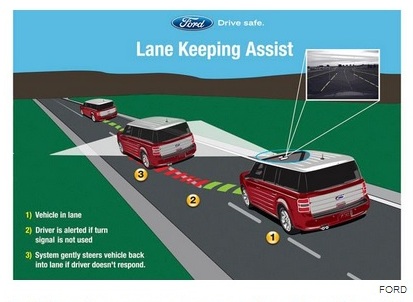When Buying A Vehicle, Think Safety!
October 8, 2014 | Category: Unsafe Vehicles | ShareGetting a new vehicle means more than just thinking about the make, model, and color. Now it means: "Think Safety".
In the past, progress toward safer cars meant devices such as seat belts and air bags that were aimed at protecting drivers and passengers in a crash. Today, new safety technology is moving toward preventing an accident from happening in the first place.
"At Spivey Law Firm, Personal Injury Attorneys, P.A., your safety is very important to us. We are providing this information as a reminder of what to consider when purchasing a vehicle," says Attorney Randall Spivey.
Here are some of the top safety features :
Electronic Stability Control (ESC)
ESC uses sensors in the vehicle to determine which direction the driver wants the vehicle to go, and compares that to which way the vehicle is actually going. If the system senses that a skid is imminent or has already started ,it can apply the brakes on individual wheels to bring the vehicle back under control. Because the system can brake individual wheels, whereas the driver can only brake all four wheels at once, ESC may be able to recover from skids that a human driver cannot.
A government study showed that ESC reduced single-vehicle crashes by 34 percent for cars and 59 percent for SUVs. Further, the Insurance Institute for Highway Safety (IIHS) estimates that ESC reduces the risk of fatal single-vehicle crashes by 56 percent and fatal multiple-vehicle crashes by 32 percent. Because of these statistics, the U.S. government mandated that all new cars be equipped with ESC starting with the 2012 model year.
Back-up Camera
Rearview cameras protect children, animals, or any living creature, from accidental back-overs. Backing up devices are not just side mirrors tilting down or causing chirps and beeps, now there is real-time viewing. The new systems use cameras that work with navigation systems to provide a wide shot of what is happening behind the vehicle. In addition to reducing, or eliminating back-overs, review cameras may help with parking and hooking up trailers.
Kids and cars, the safety advocacy group, calculates that every week in the United States two children are killed and forty-eight are seriously injured by a driver backing up and not seeing them.
 Lane Departure
Lane Departure
Safer Car.gov reports on lane-departure warning systems which alert drivers who are veering off and out of their lanes. The systems use laser sensors and cameras to warn drivers, often accompanied by a vibration in the seat or steering wheel. In some systems, the warning turns from passive safety into active safety, and brings the vehicle back into place.
Forward Collision Warning
Forward collision warning alerts the driver to slow or stopped vehicles in the lane ahead, giving the driver enough time to react and avoid rear-end collisions. Commercial vehicle and trucking fleets have relied on these systems to keep their vehicles and drivers safe for almost a decade, and now these same solutions are available to consumers.
Active Braking Systems
Active braking system makes use of cameras that detect potential hazards in the way and applies the brakes to avoid a crash.
Blind Spot Detection
Blind spot detection, using sensors or lenses, detect the presence of other vehicles directly to the vehicle's sides. They provide visual and/or auditory warning to help the driver avoid a crash according to the New York Daily News August, 2013.
Parking Aid Proximity Sensors
Some vehicles, like Tesla, have systems which advise drivers by using audible and/or visual indicators as to how close vehicles are to objects behind or in front of them. The goal is to prevent damaging the bumper in tight situations or where the sight-lines are poor. Most systems use ultrasonic sensors to detect the distance to close objects.
Tire Pressure Monitoring Systems
Since the 2008 model year, the National Highway Traffic Safety Administration (NHTSA) has required that all U.S. passenger vehicles weighing 10,000 pounds or less be equipped with a tire-pressure monitoring system. Sensors at the wheels are able to alert drivers if the air pressure is too low by an audible warning, a light on the instrument panel, or both.
There is a lot to think about when deciding which vehicle is best for a driver and his/her family, that is why the NHTSA provides its 5-Star Safety Ratings System. Check out these ratings on the NHTSA website - SaferCar.gov.
Taking the time to research safety options when looking for a new vehicle, or late model used vehicles, could save drivers from fender benders or potentially could save lives.
Fort Myers Vehicle Accident Attorney, Randall L. Spivey is a Board Certified Trial Attorney – the highest recognition for competence bestowed by the Florida Bar and a distinction earned by just one (1%) percent of Florida attorneys. He has handled over 2,000 personal injury and wrongful death cases throughout Florida. For a free and confidential consultation to discuss your legal rights, contact the Spivey Law Firm, Personal Injury Attorneys, P.A., in Lee County at 239.337.7483 or toll free at 1.888.477.4839,or by email to Randall@SpiveyLaw.com. Visit SpiveyLaw.com for more information. You can contact Spivey Law Firm, Personal Injury Attorneys, P.A.in Charlotte County at 941.764.7748 and in Collier County 239.793.7748.

